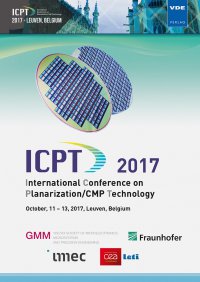Observation of the real contact area between PVA brush and surface using polarization plate and evanescent field
Konferenz: ICPT 2017 - International Conference on Planarization/CMP Technology
11.10.2017 - 13.10.2017 in Leuven, Belgium
Tagungsband: ICPT 2017
Seiten: 4Sprache: EnglischTyp: PDF
Persönliche VDE-Mitglieder erhalten auf diesen Artikel 10% Rabatt
Autoren:
Hanai, Masanao; Sanada, Toshiyuki (Shizuoka Univ., 3-5-1 Johoku Naka-ku, Hamamatsu 432-8561, Japan)
Fukunaga, Akira (Ebara Corp., 4-2-1 Honfujisawa, Kanagawa 251-8502, Japan)
Hiyama, Hirokuni (Ebara Corp., 11-1 Haneda Asahi-cho, Ohta-ku, Tokyo 144-8510, Japan)
Inhalt:
PVA (Polyvinyl acetal) brushes have been widely used for a wet cleaning in the semiconductor device fabrication. To better understanding contact conditions between a PVA brush and cleaning surfaces, we observed gas-liquid-solid interface using a total reflection microscope with polarization plates. First, we investigated real contact areas of a POM (Polyoxymethylene) ball by applying normal loads in air and water. Then we observed the contact conditions of PVA brushes. As a result, the observed real contact areas of the POM ball were agreed with the estimation from the Hertz’s contact theory. In addition, the real contact areas between a PVA brush and a glass plate in air and water were also able to observe. From the observation, it is found that many bubbles were existed even in the hydrophilic sponge. We concluded that the part of a PVA brush is in contact with a surface. Keywords: PVA brush, Real contact area, Total reflection microscope, Polarization, Bubble


